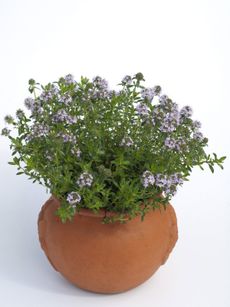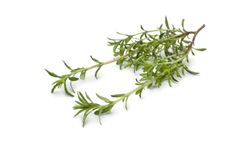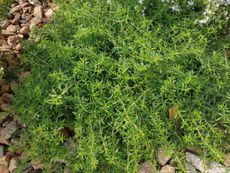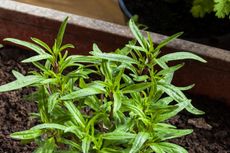Care Of Winter Savory: Learn How To Grow Winter Savory Herbs


While you may have parsley, sage, rosemary, and thyme in your herb garden, you may be lacking in savory. There are two types of savory, summer and winter but here we’re going to focus on how to grow winter savory herbs. Read on to find out about the care and growing of winter savory and other winter savory plant info.
Winter Savory Plant Info
Winter savory (Satureja montana) is an herbaceous, perennial hardy to USDA zone 6 while summer savory is grown as an annual. The ancient Roman writer, Pliny, named the genus ‘Satureja,’ which is derived from the word “satyr,” a half goat and half man mythological being who reveled in all savory delights. It was these ancient Romans that introduced the herb to England around the time of Caesar’s reign. Both winter and summer savory have a strong peppery flavor, although winter savory has a more pungent flavor than summer. Both herbs can be used in a variety of foods and help to enliven flavor without the use of additional salt and pepper. For this reason, winter savory herbs are often paired with beans during cooking since the addition of salt at that time would toughen the beans. Savory is not only used in a variety of culinary preparations, but the dried leaves are often added to potpourri. The fresh or dried leaves can also be used to infuse vinegar, herb butters, or steeped for tea.
How to Grow Winter Savory
Winter savory is a hardy semi-evergreen bush with glossy, dark green leaves and woody stems. It is easy to grow and, once established, care of winter savory is nominal. It can be used as a border plant in the herb garden or planted as a companion plant along with beans where it is said that growing winter savory keeps bean weevils away. Winter savory is also planted near roses where it is purported to reduce mildew and aphid infestations. This herb gets from 6 to 12 inches (15-31 cm.) in height and 8 to 12 inches (20-31 cm.) across. Like most herbs, it thrives in full sun for at least six hours per day in well-draining soil with a pH of 6.7. Sow seeds in the spring in flats to transplant outdoors once the soil warms; transplant seedlings 10 to 12 inches (25-31 cm.) apart in the garden. Winter savory can also be propagated via cuttings. Take cuttings, the tips of new shoots, in late spring and place them in pots of wet sand. When the cuttings root, transplant them to the garden or into another container. Harvest winter savory in the morning when the essential oils are at their most potent. It can then be dried or used fresh. In temperate climates, winter savory will go dormant in the winter and put out new leaves in the spring. Older plants tend to get woody, so keep them pruned out to encourage new growth.
Gardening tips, videos, info and more delivered right to your inbox!
Sign up for the Gardening Know How newsletter today and receive a free download of our most popular eBook "How to Grow Delicious Tomatoes."

Amy Grant has been gardening for 30 years and writing for 15. A professional chef and caterer, Amy's area of expertise is culinary gardening.
-
 Clever Vertical Vegetable Garden Ideas For Small Spaces – 7 Ways To Save Space
Clever Vertical Vegetable Garden Ideas For Small Spaces – 7 Ways To Save SpaceShort on garden space? Learn some vegetable garden ideas for small spaces that are fun and easy.
By Mary Ellen Ellis
-
 26 Different Types Of Orchids – With Pictures & Information
26 Different Types Of Orchids – With Pictures & InformationDiscover stunning orchid types to grow in your home and garden – from easy beginner varieties to rare and exotic species that are the preserve of experts.
By Melanie Griffiths
-
 Indoor Winter Savory Care: How To Care For Winter Savory Inside
Indoor Winter Savory Care: How To Care For Winter Savory InsideLove the flavor of savory in your cooking? Growing winter savory indoors lets you enjoy those flavorful leaves year round. Learn more here.
By Bonnie L. Grant
-
 Picking Savory Plants – Learn About Savory Uses After Harvesting
Picking Savory Plants – Learn About Savory Uses After HarvestingCultivated for at least 2,000 years, both summer and winter savory have a multitude of uses after harvesting and are worthy additions to any herb garden. The following article contains information on harvesting savory herbs.
By Amy Grant
-
 Creeping Savory Plants – How To Care For Creeping Savory Plants In The Garden
Creeping Savory Plants – How To Care For Creeping Savory Plants In The GardenCreeping savory in gardens are compact, fragrant plants at home in herb gardens or along borders or pathways. They're also great for containers and window boxes. Click this article to learn more about growing creeping savory in your own garden.
By Mary H. Dyer
-
 Summer Savory Plant Care – Tips On Growing Summer Savory Herbs
Summer Savory Plant Care – Tips On Growing Summer Savory HerbsSummer savory may not be as well known as some of its herb counterparts, but it's a serious asset to any herb garden. Click on this article to learn more about growing summer savory herbs, including summer savory plant care.
By Liz Baessler
-
 Growing Savory In Your Garden
Growing Savory In Your GardenGrowing savory in the home herb garden is not as common but both winter and summer savory are excellent additions to the kitchen. Planting savory is easy and, this article will help.
By Heather Rhoades